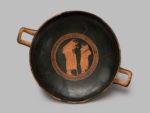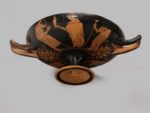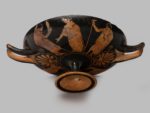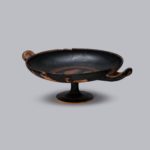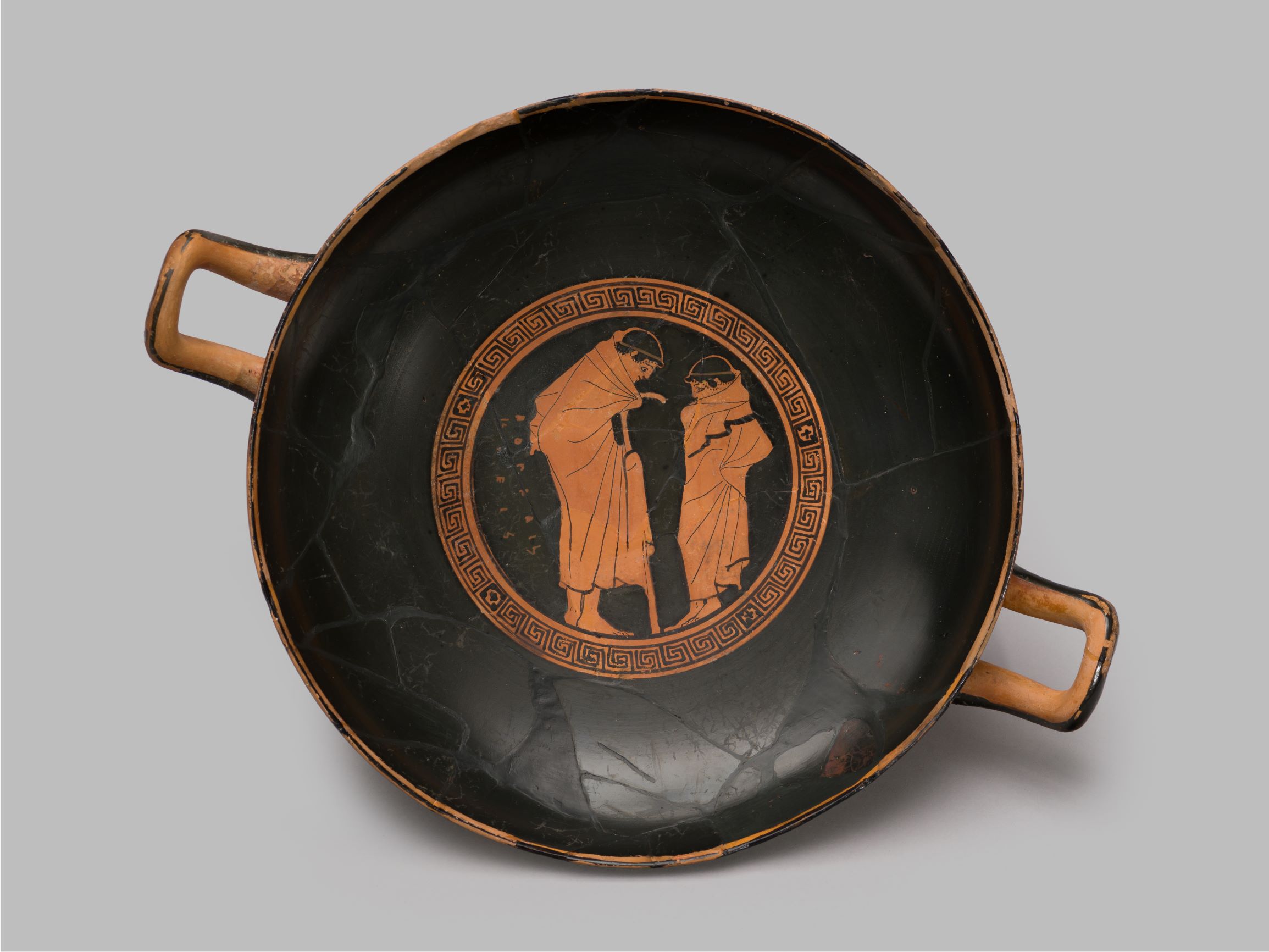
Cup [Gr19]
Athenian Black-Figure, by the Wedding Painter, c. 460 BC
Painted terracotta (h. 9 cm, w. 29.7 cm), mended with small restorations
Interior: painted black, reserved tondo with a youth and a boy, inscription (misspelt) to the left of the boy: ΗΟΠΑΙΣΚ[Α]EIΣ. Exterior: On both sides a woman stands between two youths, the inscription ΗΟΠΑΙΣΚΑΛΟΣ between the head of the woman and the youth to the right. In one scene the woman holds out an alabastron (perfume flask) to the youth on the left, and in the other the youth on the left holds out an alabastron towards the woman. On both sides another youth looks on, holding a stick. Palmettes beneath the handles.
The artist of this small kylix (drinking cup) is named the Wedding Painter after a pyxis (box) by him in the Louvre which shows the wedding of Thetis and Peleus. He worked in Athens from about 480 to 460 BC. His work is typical of the early Classical style of Greek art, which developed in the first half of the 5th century, replacing the Archaic style of the 6th century. The more naturalistic approach of Classical art is evident here in the way that the Wedding Painter depicts drapery. In Archaic art, clothing tends to fall vertically, obscuring the form of the figure beneath, but the youth and the boy in the tondo of this cup are wrapped tightly in their cloaks. With great precision and economy, the painter has used the folds of their dress to indicate the outstretched elbow of the man and the position of both figures’ hands.
This is one of several cups by the Wedding Painter with exterior scenes that appear to show women and youths exchanging gifts, although in each case the exact narrative remains unclear. The tondo inside the bowl of this cup shows a youth (still too young to have grown a beard) meeting a much younger boy. On both the exterior and interior is the inscription ΗΟΠΑΙΣΚΑΛΟΣ (‘the boy is beautiful’), which may suggest that these should be interpreted as scenes of courtship.
Literature: R. Foster, Winchester College Treasury: a guide to the collections (Winchester, 2016), p. 52; J. Falconer and T. Mannack, Corpus Vasorum Antiquorum: Great Britain, Fascicule 19: Winchester College (Oxford, 2002), pp. 7-8, plate 6.5-8; J.D. Beazley, Attic Red-Figure Vase-Painters 2nd edn. (Oxford, 1963), p. 923.21; J.D. Beazley, Attic Red-Figure Vase-Painters (Oxford, 1942), p. 606.12; Winchester College Memorial Buildings: Department of Classical Art (Winchester, 1909), p. 22 (no. 71)
Provenance: From Orvieto, at Winchester College by 1909
Location: Treasury, Gallery 3
